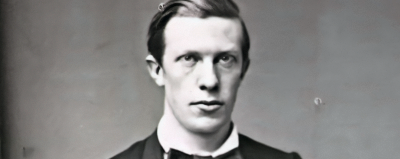The first achievements of the ISI after its creation in 1885
My first article posted in January 2020 year described how ISI was created on 24 June 1885, during the Jubilee meeting of the Statistical Society of London. My second article, posted in March, reminded that this creation was the result of a long history of statistical international cooperation initiated in 1851. My third paper, posted in May, illustrated the first two years of the ISI from its creation to its 1st Session in Rome in 1987. This fourth paper describes some of the first achievements of the ISI.
The fourth of the series of articles devoted to the 135th anniversary of the ISI written by Jean-Louis Bodin, former ISI President (1999-2001).
The objectives of the ISI, as described in article 1 of the Rules and Procedures adopted at its creation and transformed into Statutes by the 1st Session, were as follows:
- attaining uniformity between countries in data compilation and tabulation;
- inviting governments to use statistics;
- preparing international publications, including International Statistical Directories;
- promoting statistical science.
The first of these objectives led the ISI to prepare and propose international classifications; the first one to come into existence was the International Classification of Diseases and Causes of Death. First discussions about this classification were made during the 1st International Statistical Congress held in Brussels in 1853. The 3rd ISI session in Vienna (1891) marked the beginning of international acceptance of statistical lists of causes of death and sicknesses: Jacques Bertillon, Chief of Statistics of the City of Paris, was asked to chair a committee that would prepare a list of causes of death adopted by the following ISI session (1893, 4th session in Chicago). Early in the history of this classification, a revision cycle was established to keep the list abreast of medical progress. In 1899, during the 7th ISI session in Christiana (former name of the city of Oslo), the proposal made by the American Public Health Association for a decennial revision of the list was approved. Nowadays maintenance and revision of this classification are made by the World Health Organization (WHO) created in 1948 and based in Geneva.
The interpretation of the second objective caused some difficulty as some chief statisticians feared that it might encroach on the prerogatives of governments, despite the efforts made by Sir Rawson W. Rawson, ISI President from 1885 to 1899, to avoid overly meaningful words. In fact, the controversy continued until the creation of the International Statistical Commission by the League of Nations in October 1920.
Regarding the third objective, the ISI had an ambitious programme including a monthly bulletin, an international statistical yearbook, scientific publications and proceedings of the sessions. One of the first tasks of the newly created ISI was the production of an International Statistical Directory, which is mainly in the hands of international organisations today. In fact, carrying out such a programme was very difficult for an organisation which had no permanent seat, no permanent body and a small income beyond the annual dues of its small membership. It was not until the 13th session in the Hague in 1913 that the Permanent Office was created. However, setting up a full publications programme could not be immediate because of the 1st World War.
The fourth objective (promoting the statistical science) was neglected in the early years. An interesting controversy having to do with “representative methods” occurred in the last decade or the 19th century. This controversy followed a paper presented in French by Nicolai Kiær, director of the Norwegian Central Bureau of Statistics, during the 5th ISI session in Bern (1895): Observations et expériences concernant des dénombrements représentatifs. The reactions of the ISI General Assembly against Kiær’s paper were violent and Kiær’s proposals were refused almost unanimously! Kiær reiterated his proposals during the 6th session in St. Petersbourg in 1897 and the 8th session in Budapest in 1901 with the same results despite support of Scandinavian and French delegates. After 1903, sampling methods were even excluded from the agenda of the ISI sessions. The exclusion lasted until the 16th session in Rome (1925) where the ISI General Assembly approved the conclusions of a committee in favour of these methods (Corrado Gini and Lucien March were among the members of this committee).
Note: I had already cited the two stories told above in the paper I presented during the 62nd ISI WSC in Kuala Lumpur in August 2019 (session IP355). See also Statistical Journal of the IAOS, vol. 36, no. 2, pp. 303-308, 2020.



